General Notes
Many of these wild onsen – particularly those below the dam – are only a few meters away from the Shiishikaribetsu River. After heavy rain and/or storms, they may be completely filled with sand and debris. As of writing (March 2018), a few of them had been destroyed by the 2016 typhoon that ravaged central Hokkaido. No doubt they’ll be re-constructed as time goes by, as some of them already have been.
Regardless of what calamities have come before, however, very few of these pools are maintained over the winter months. Therefore, be prepared to do some maintenance yourself before you use them – for example cleaning around the edges, removing leaves, or perhaps even shoveling out sand.
Also note that many of the Japanese sources I found on the Internet about the onsen below contradict each other on some of the names of each separate pool. Apart from the Shika-no-yu at the campground, just know that if you start at the dam (here) and clamber down the side of the river from there for no more than 300m, you’ll find at least three or four decent-sized hot pools along the way.
Important
These pools are maintained 100% through volunteer passion and effort.
We encourage visitors to treat the pools with the utmost respect. If you pay them a visit, consider giving them a quick scrub and/or clean. Be sensitive to the locals’ norms and practices. Any trash should, or course, be packed out. Take one more quick look around the area before you leave to make sure you’ve got all your belongings.
Shika-no-yu Onsen (鹿の湯)
This is a large concrete-bound circular open-air hot spring, fed by two smaller hotsprings a few meters away. The large pool will comfortably fit at least 10 people.
- Location: At the far end of the Shikaribetsu Gorge Campground (here).
- Changing room: In summer, yes. Not in winter.
- Gender-separate pools: No.
- Notes: Over the winter months, it can develop a green slimy coating to the underwater surfaces of the pool. A shovel to remove slime from the edges is recommended. Also check that the hot water is flowing from the two feeder pools. You may need to clear away leaves from the mouths of the pipes.
- Meaning: “Shika-no-yu” means Hotspring of the Deer. An apt name considering how many deer there are in the area.
- Details in Japanese: Mixed Bath Journalist Mina’s details
Fufu-no-yu Onsen (夫婦の湯)
A one- to two-person pool carved out of the rock cliff face just above Shika-no-yu. It feeds into the Shika-no-yu. It is quite deep, and when we were there in early spring it was the perfect temperature.
- Location: At the far end of the Shikaribetsu Gorge Campground (here).
- Changing room: Not in winter.
- Gender-separate pools: No.
- Notes: Over the winter months, it can develop a green slimy coating to the underwater surfaces of the pool, and can collect leaves and dead grass. A shovel to remove slime from the edges is recommended.
- Meaning: “Fufu” means husband-and-wife.
- Details in Japanese: Mixed Bath Journalist Mina’s details
Gakeshita-no-yu Onsen (崖下の湯)
A medium-sized pool fed directly from hot water trickling out of the cliff. Depending on the level of the water, it is possible to squeeze into the small cave in the cliff for a natural sauna. Hands down the most amazing outdoor wild onsen experience I’ve ever had.
- Location: About 150m below the dam on the Shiishikaribetsu River (here).
- Changing room: No.
- Gender-separate pools: No.
- Notes: There may be a green algae growing on the rocks in the pool. When we were there, it had been scrubbed clean (scrubbing brushes are provided). If the pool is really empty, you’ll need to block the outlet. We used a piece of pipe hanging up close by to do this. After about 30 minutes the pool had enough hot water in it to spread out comfortably.
- Meaning: “Gakeshita-no-yu” literally means The Hotsprings Below the Cliff.
- Details in Japanese: Mixed Bath Journalist Mina’s details
Pira-no-yu Onsen (ピラの湯)
An onsen fed by a hot-water waterfall. The pool currently does not exist, but appears to have existed previously.
- Location: About 250m below the dam on the Shiishikaribetsu River (here).
- Changing room: No.
- Gender-separate pools: No.
- Notes: While the pool no longer exists (as of March 2018), the hot-waterfall is interesting to visit. We visited the waterfall as we waited for the Gakeshita-no-yu to fill up. Of course, if you’ve got the time and the inclination, you could always spend a day try making a pool yourself with the surrounding rocks.
- Meaning: “Pira” means precipice in Ainu language.
- Details in Japanese: Mixed Bath Journalist Mina’s details
Chinika-no-yu Onsen (チニカの湯)
There was only a small pool to indicate that this large (20-person) pool ever existed. I imagine the sand that filled it up will be dug out soon enough by some keen hot-spring lover.
- Location: About 10 meters upstream from the Gakeshita-no-yu (here).
- Changing room: No.
- Gender-separate pools: No.
- Notes: I’ve also seen this hot spring referred to as Penichika-no-yu (ペニチカの湯 – here).
- Meaning: “Chinika” means ‘dream’ in Ainu language.
- Details in Japanese: Mixed Bath Journalist Mina’s details
Menoko-no-yu Onsen (メノコの湯)
This is a one or two-person sized pool above Gakeshita-no-yu. It is the highest up of any of the pools in the area.
- Location: Just above Gakeshita-no-yu (here).
- Changing room: No.
- Gender-separate pools: No.
- Meaning: “Menoko” means ‘woman’ in Ainu language.
- Details in Japanese: Mixed Bath Journalist Mina’s details
Damushita-no-yu Onsen (ダム下の湯)
This is a one- to two-person pool, right below the lower dam on the Shiishikaribetsu River. It was quite green and covered in algae when we were there in winter, but it was beautifully scrubbed clean and the perfect temperature in August. Highly recommended.
- Location: Just below the lower dam (here).
- Changing room: No.
- Gender-separate pools: No.
- Meaning: “Damu-shita” means ‘below the dam’ in Japanese.
- Details in Japanese: Mixed Bath Journalist Mina’s details


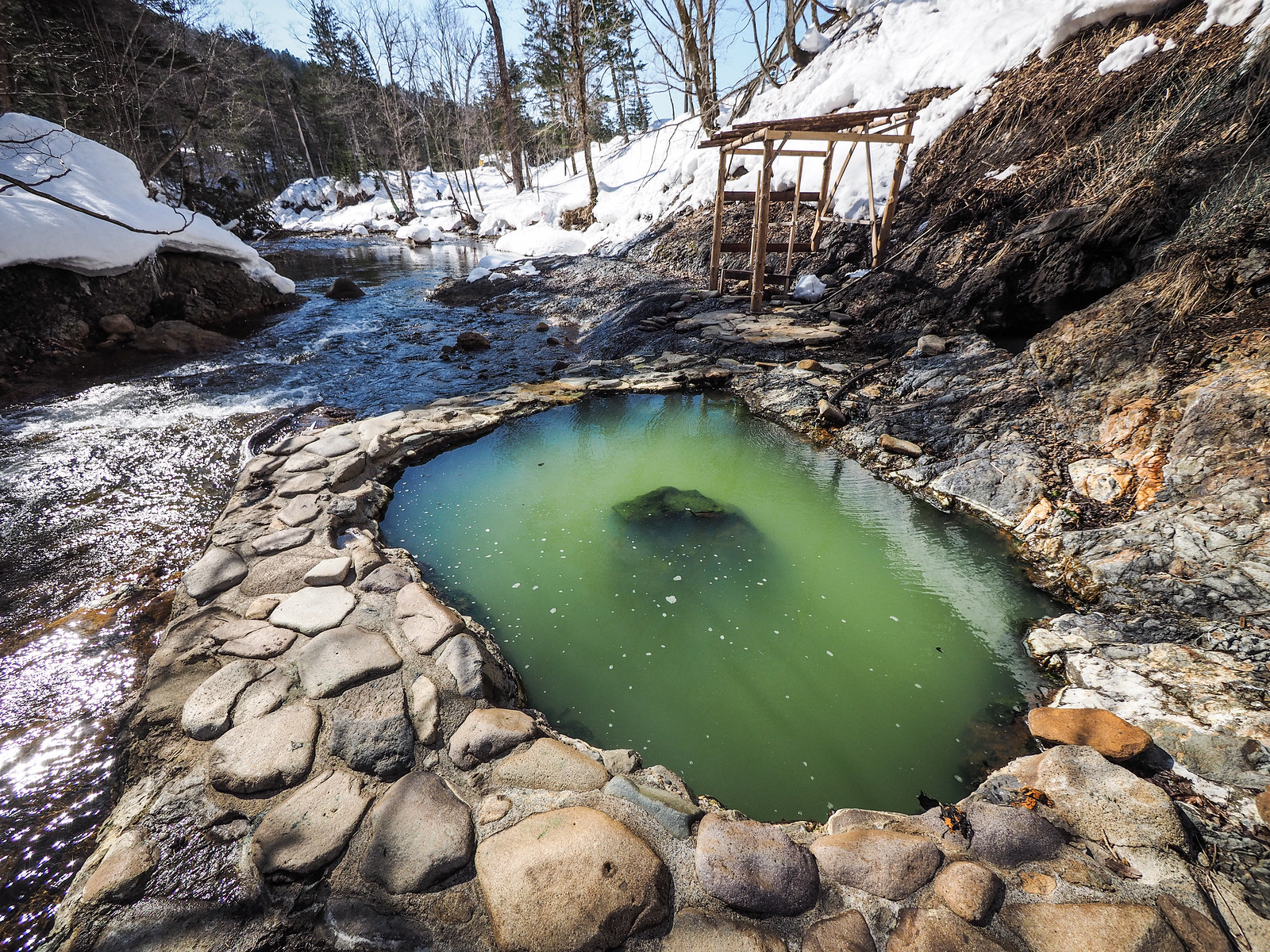
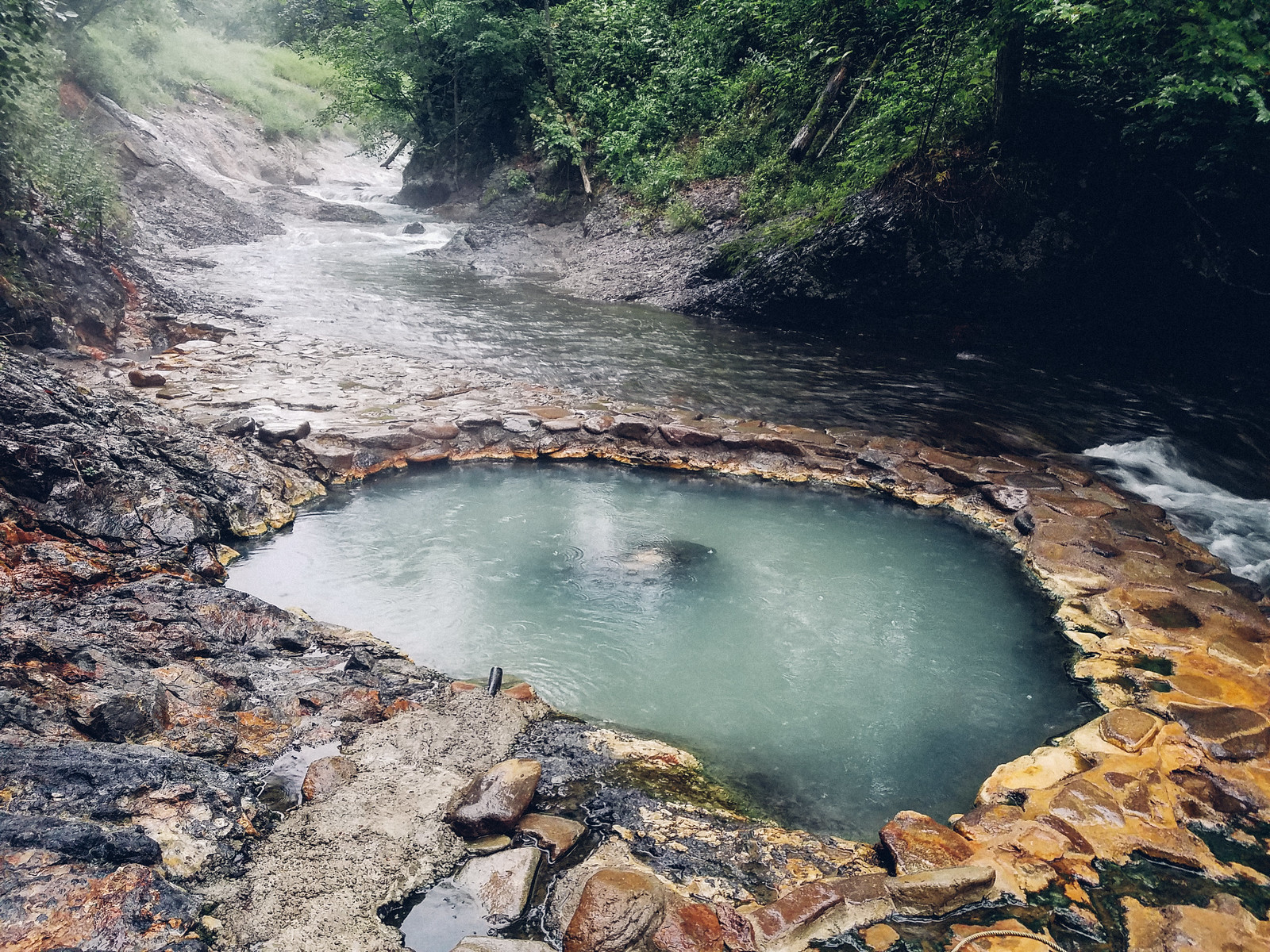
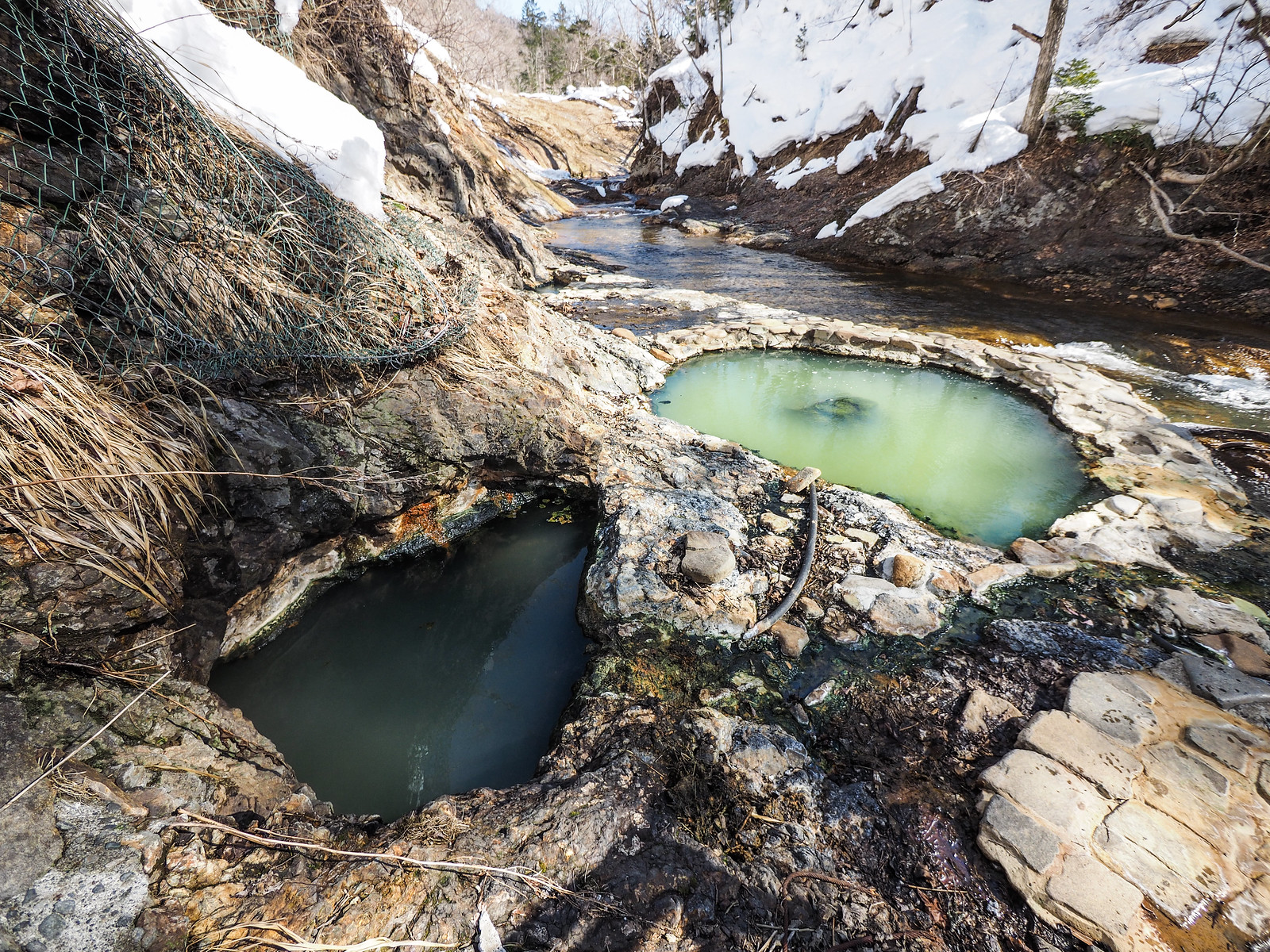

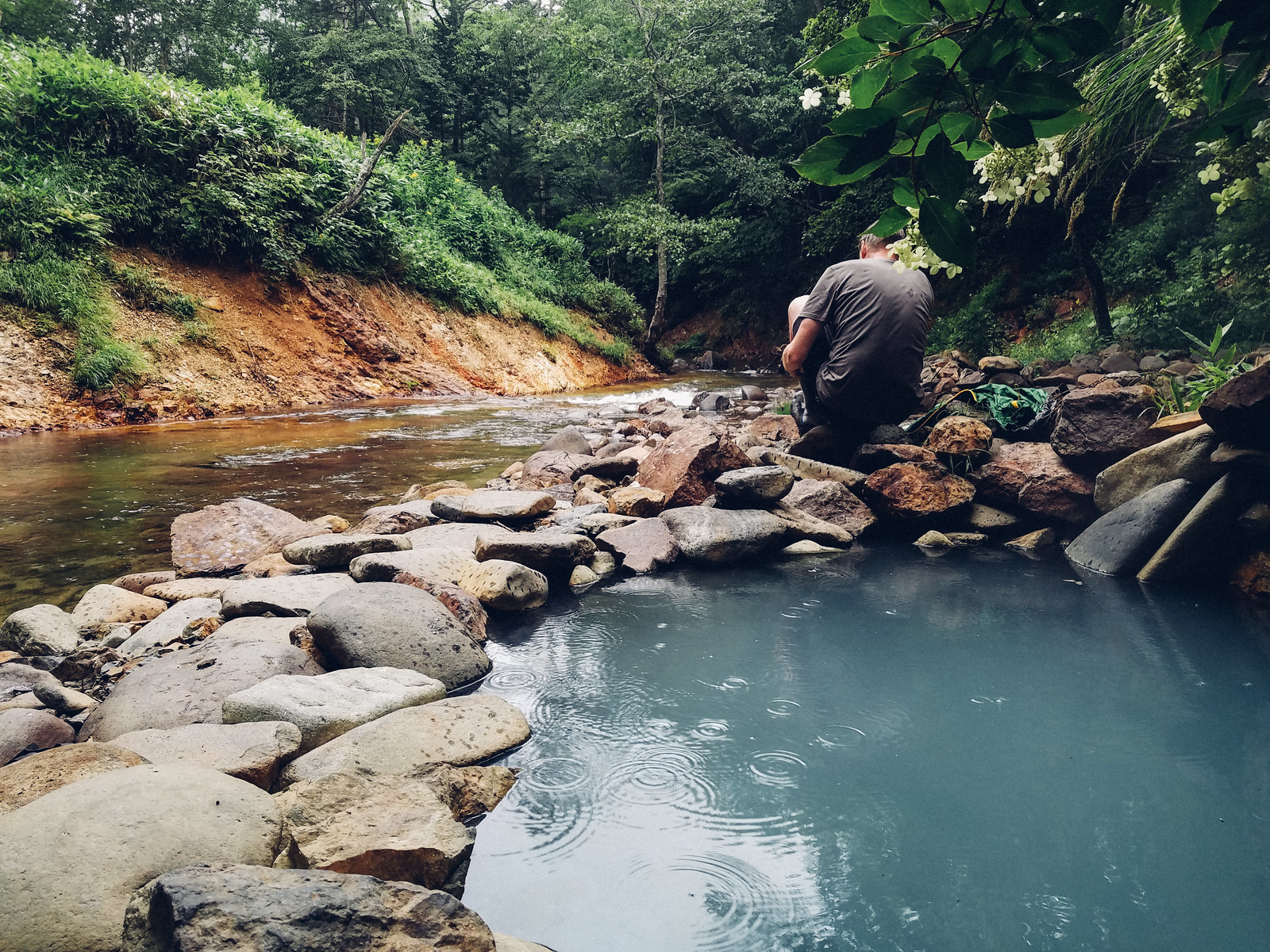


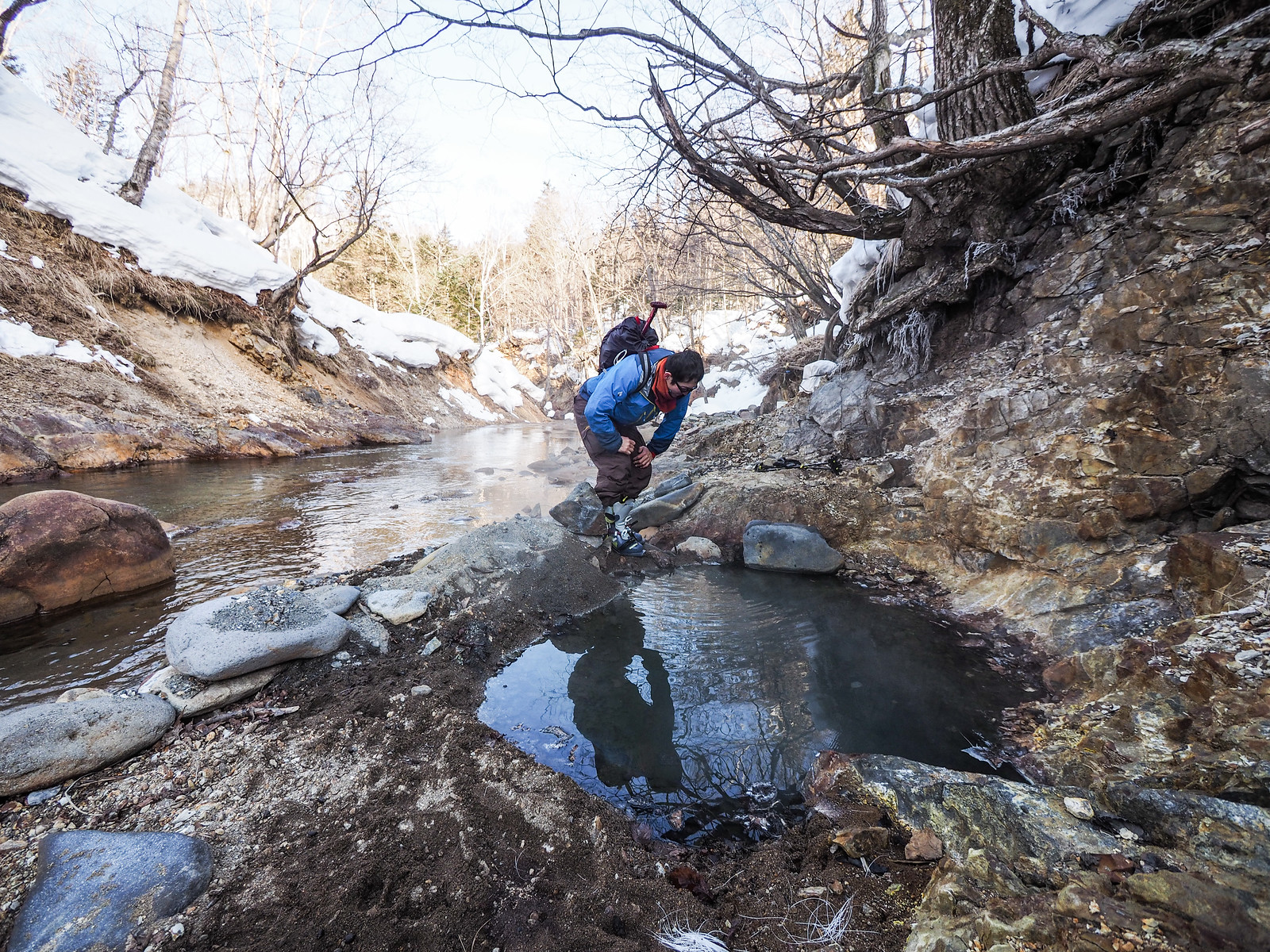
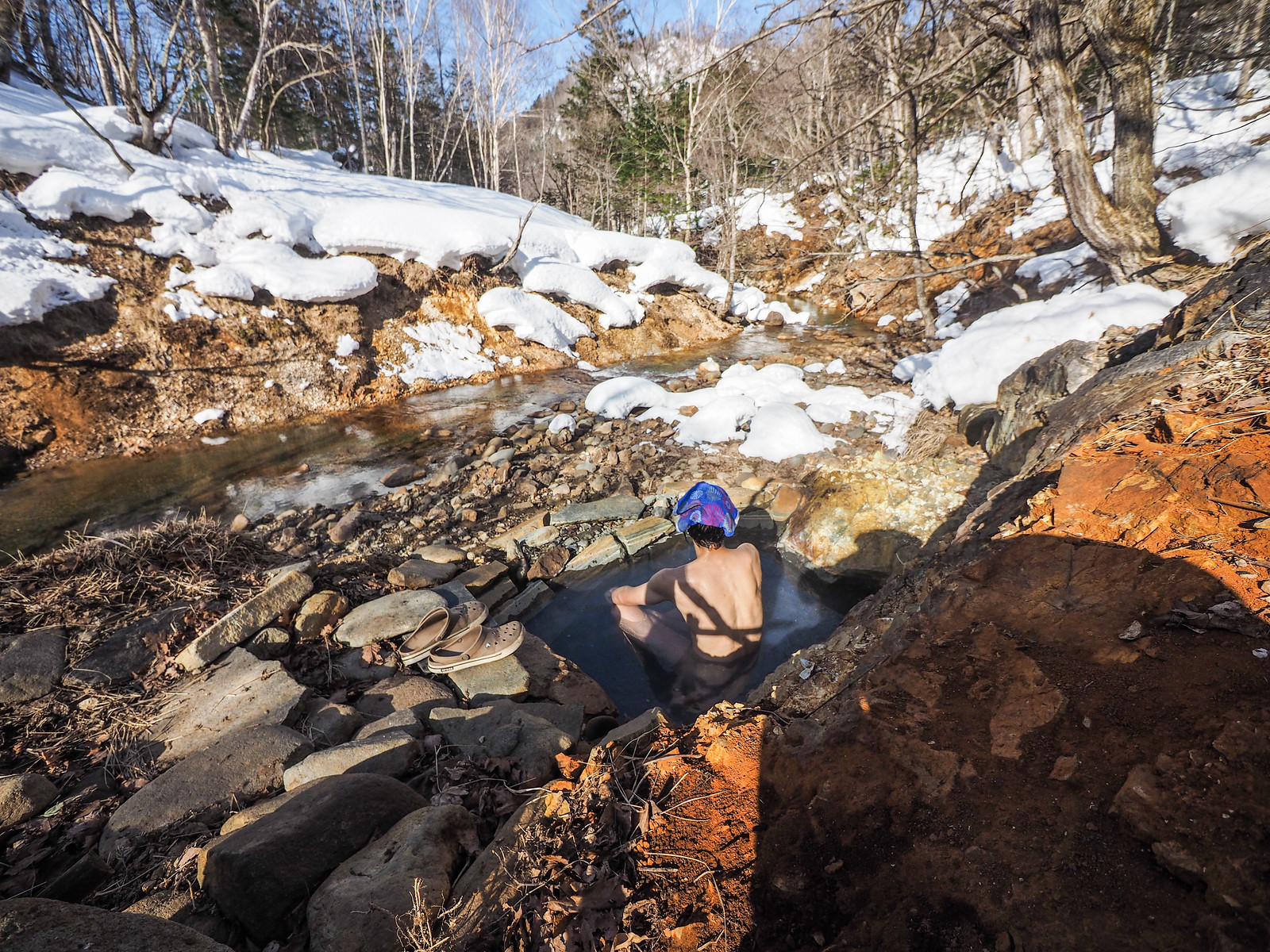







12 thoughts on “Shikaribetsu Gorge Wild Onsen Guide”
Pingback: En el norte de Japón le espera una aventura de golf que limpiará el alma - Espanol News
Pingback: What to do in Hokkaido? - Adventure Hokkaido
Hey – so grateful for this info! We’re going to head to camp this weekend So! Mid – May… what I want to know is if I can drive to the campground this time of year (and thus take my futon and duvet and unload from car to tent) or do we need to plan to hike in with proper light camp gear? THANK YOU FOR POSTING!
For sure the campground will still be closed, and I personally would still be expecting some snow around. You may want to pack snowshoes just in case. We’ve not been up there in May before.
We just went there today by car and foot and it was wonderful, thanks for the tip !
Great to hear, Jerome!
Are the campgrounds open in winter, and are there more extensive areas around for skiing or hiking? Also, since the springs are wild, I assume no real issues with tattoos?
Hi David. No, most campgrounds in Hokkaido are closed in winter (including this one). If you’re looking for more backcountry ski touring routes, check out our routes page – https://hokkaidowilds.org/skitour – and for hiking check out our hiking page – https://hokkaidowilds.org/hike.
As for tattoos – there’s no problem at these hotpools, since they are wild.
Thanks for the info. Would there be any issues with wild camping in the area? Loved the article and pictures, by the way. Thanks again!
We camped in the campground even though it was closed (https://hokkaidowilds.org/ski-touring/shikaribetsu-gorge-hot-springs-ski-camping-central-hokkaido-japan). Generally no issues with camping wild in the winter anywhere.
Do you have to be staying at the campground to use the Shika-no-yu pool?
( This is great information thank you! )
Good question. No you don’t. There is a donation box in the campground entrance building which you might want to drop a hundred yen or so on your way past though.